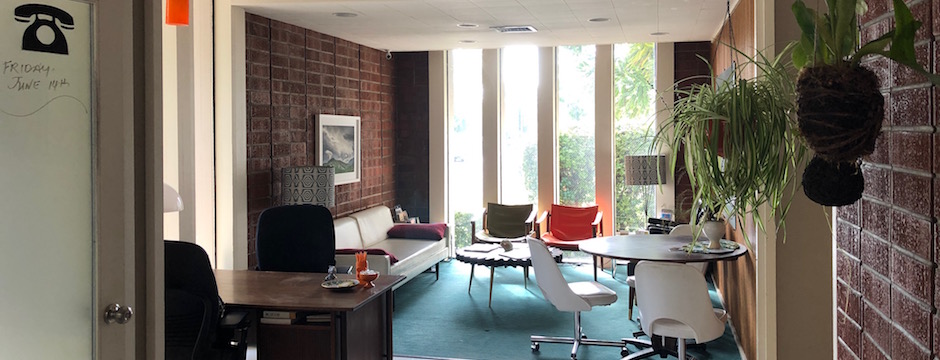
Written by Natasha Juliana.- June 13, 2019
Tuesday afternoon around 3:40, while the outside temperature hovered around 100 degrees, the power at WORK started acting weird. The lights dimmed a little, the A/C shut down – the thermostat flickered on and off. The WiFi was still working and you could charge a phone, but you couldn’t charge a computer. The air purifiers and the bathroom hand drier were blowing at half-speed and if you ran the hot water at the kitchen sink, an ominous clicking sound emanated from the electric water heater below. It wasn’t a total loss of power, but it seemed we were running on half power. In retrospect, I suppose this is the definition of a brownout – something I’ve heard about but don’t remember experiencing before.
My first instinct was to go around turning off extra power. All the overhead lights we had on – did we really need those? After all, it was a bright sunny day and everyone was staring at illuminated computer screens, anyway. The table lamps create ambience, but also unnecessary. The air purifiers are nice, but we can easily do without them. The microwave and the copier needed to be unplugged because the power surges were sending them into a tizzy, reminding us of the slow, constant pull of electricity this equipment uses all day long while it idles in the background waiting for us to use it.
Finally, the power went out completely and we lost Internet, as well. Well, there goes that work day! But my friends across the street had it worse. I watched Naomi and Joel, the owners of Lunchette, stacking their salads into the back of their van for transportation across town to their other business, Pizza Politano, where the coolers were still running. Losing refrigeration, a huge issue for all food businesses, made our complaints over loss of lights and WiFi seem petty by comparison.
That afternoon was another reminder of how fragile our current power system is and how dependent we are on the grid. As PG&E begins announcing more blackouts for fire safety, unannounced brownouts start to become more common, and we realize how important a constant source of power is to the maintenance of our everyday lives, I see two potential outcomes.
One, we begin to take energy independence way more seriously. As we sat in the lounge, with the lights off and our computers running out of juice, people started chatting about the upside of onsite power generation and storage. A quick Google search of the Tesla Powerwall battery pack tells us that the recommended 2 units will cost $14,500 and will power your home for 7+ days. If you add solar to that mix, it could go on as long as the sun shines. Now that seems like a lot of upfront cost, but especially for businesses with a lot to lose (like coolers full of perishable food), this could easily be worthwhile. If the grid becomes more and more unreliable, I could easily see a boom in private alternative energy systems. More than a long-term desire to save the planet, a short-term desire simply to keep the power flowing could be the strongest motivator to taking immediate action.
Two, we begin to question our gluttonous consumption of all kinds of energy. Fossil fuels were a blessing in the beginning. Cheap power meant we could all have air conditioning when it’s too hot, heat when it’s too cold, light when it’s too dark, transportation to pretty much anywhere anytime, and as many appliances, devices, and gizmos as we can imagine. But after flicking off 30 lightbulbs we didn’t really need, I began to question my unquestioned assumptions about what an appropriate use of energy for my business really is. I may have switched to LED bulbs and Evergreen 100% renewable electricity, but what about the underlying, unexamined, wasteful habits of excessive consumption? At home, I have adopted a mindset of treating power like water. I wouldn’t leave a room with a faucet running, so I try not to leave a room with the light on either. But at WORK, it seemed unprofessional to have the lobby not lit up (even if it’s not physically necessary), and it felt safer to leave a few lights on at night after we closed (though I’m betting there is no statistical evidence to prove that).
So, if you come into WORK now and it’s looking like we’re not open because many of the lights are off and you are more comfortable in short sleeves, even though the A/C is running, you’ll know why. I’m going to attempt to challenge the expectations of what a business should look like, and treat energy like the precious commodity it is. I’ll probably fail and give in to the norm set by society, but I’ll try. And maybe, if enough of us try, we can move the needle on those norms we’ve adopted over time.
Edited by Linda Jay.

